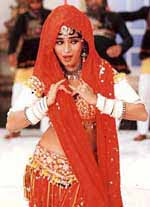Total Chaos
 "Marseilles isn't a city for tourists. There's nothing to see. Its beauty can't be photographed. It can only be shared."
"Marseilles isn't a city for tourists. There's nothing to see. Its beauty can't be photographed. It can only be shared."
The first volume in Jean-Claude Izzo's Marseilles Trilogy takes its French title (Total Khéops) from the Marseilles rap group IAM. The novel pulsates with the energy of the multiethnic, polyglot port city of southern France, where people of various Mediterranean descents--Italian, Spanish, Greek, Turkish, Lebanese, North African--mix uneasily. "You already heard a strange kind of French spoken in Marseilles," Izzo's narrator Fabio Montale, an "unimportant neighborhood cop," relates, "a mixture of Provençal, Italian, Spanish and Arabic, with bits of slang thrown in." The residents of the city are creating a unique identity that's not so much French as Marseillais. The city itself is a major presence in the novel.
As Montale investigates the deaths of two street criminals, his friends from adolescence, he mulls over the points at which their fates diverged. Izzo's prose is blunt and spare, in the hard-boiled tradition. He does experiment with shifting time unexpectedly--in the middle of a conversation you'll realize that the speakers have changed, and that Montale is reliving a memory from three decades ago. Then just as abruptly you'll be returned to the present. These unannounced temporal shifts are a bit disconcerting at first, but you quickly enter the flow of Montale's consciousness, where past and present intermingle. (The book has been translated expertly, to my ear at least, by Howard Curtis.)
Izzo has also made his narrator something of a gourmand, and the novel is filled with memorable descriptions of the preparation and consumption of spectacular meals. Don't pick it up when you're hungry.
The vivid setting, narrative experimentation and mouth-watering meal descriptions are welcome, because some aspects of the novel fall into time-worn clichés. There's the narrator Montale, a hard-boiled cop whose attitudes are a bit too sympathetic to the downtrodden to ring true; a hooker with a heart of gold; various beautiful women (including the aforementioned hooker) who apparently find unimportant neighborhood cops to be irresistible; and a multiethnic crew of thugs who possess enough guns to supply a small army. Of course, the street criminals are doing the bidding of those connected to the political and economic power structure, who are insulated from any danger of being brought to justice.
In that, as in the loving attention paid to food and sex, Izzo's novel bears a strong resemblance to Manuel Vázquez Montalbán's Pepe Carvalho mysteries, which are set in another Mediterranean city, Barcelona. There's the same blunt language, incredible meals, gorgeous and inexplicably available women falling over each other to bed the middle-aged hero, and criminals who are ultimately too powerful to touch.
But despite its derivative aspects, Total Chaos is very much worth reading for the picture it offers of Marseilles, the city's mix of cultures and the new sorts of identities being forged there. A place where, despite daily racial tensions, the presence of the anti-immigrant National Front, and relentless pressures on poor immigrants, their vitality and resilience win out--at least until the next day, when it will start all over again. As Montale says, "That was the history of Marseilles, and always had been. A utopia. The only utopia in the world. A place where anyone, of any color, could get off a boat or a train with his suitcase in his hand and not a cent in his pocket, and melt into the crowd. A city where, as soon as he'd set foot on its soil, this man could say, 'This is it. I'm home.' Marseilles belongs to the people who live in it."















